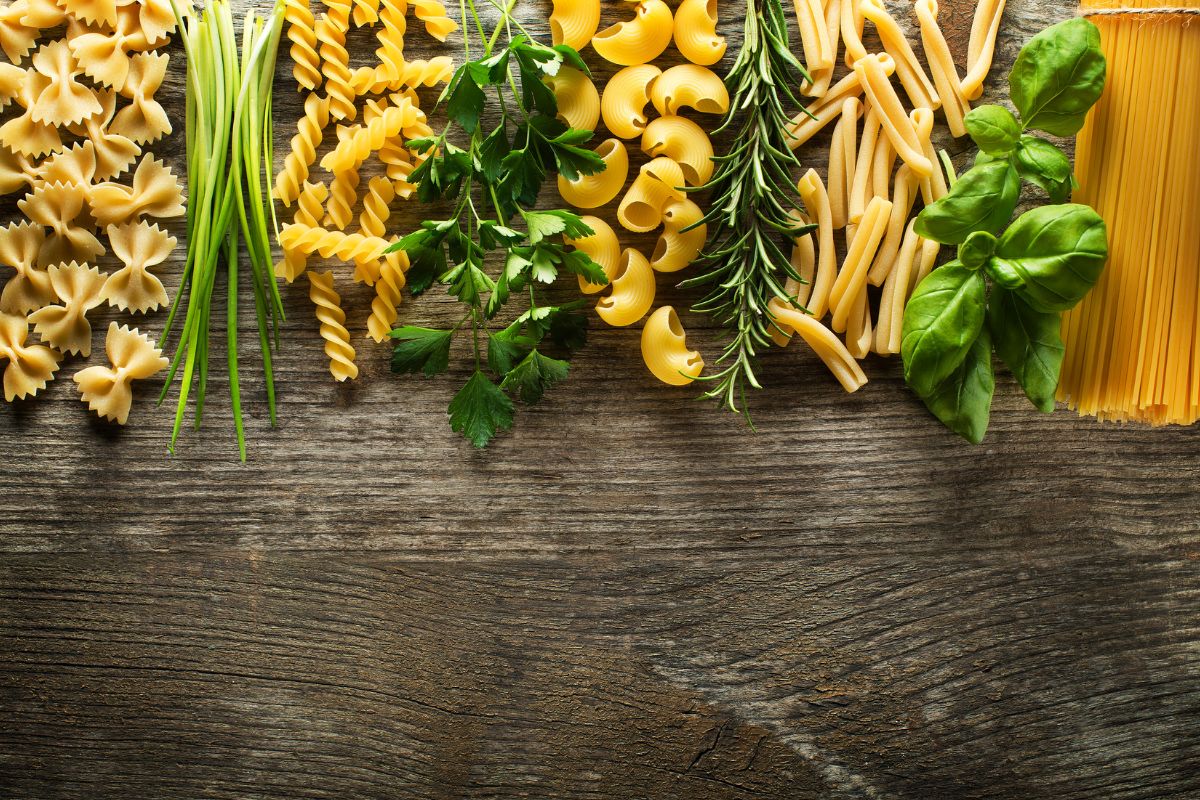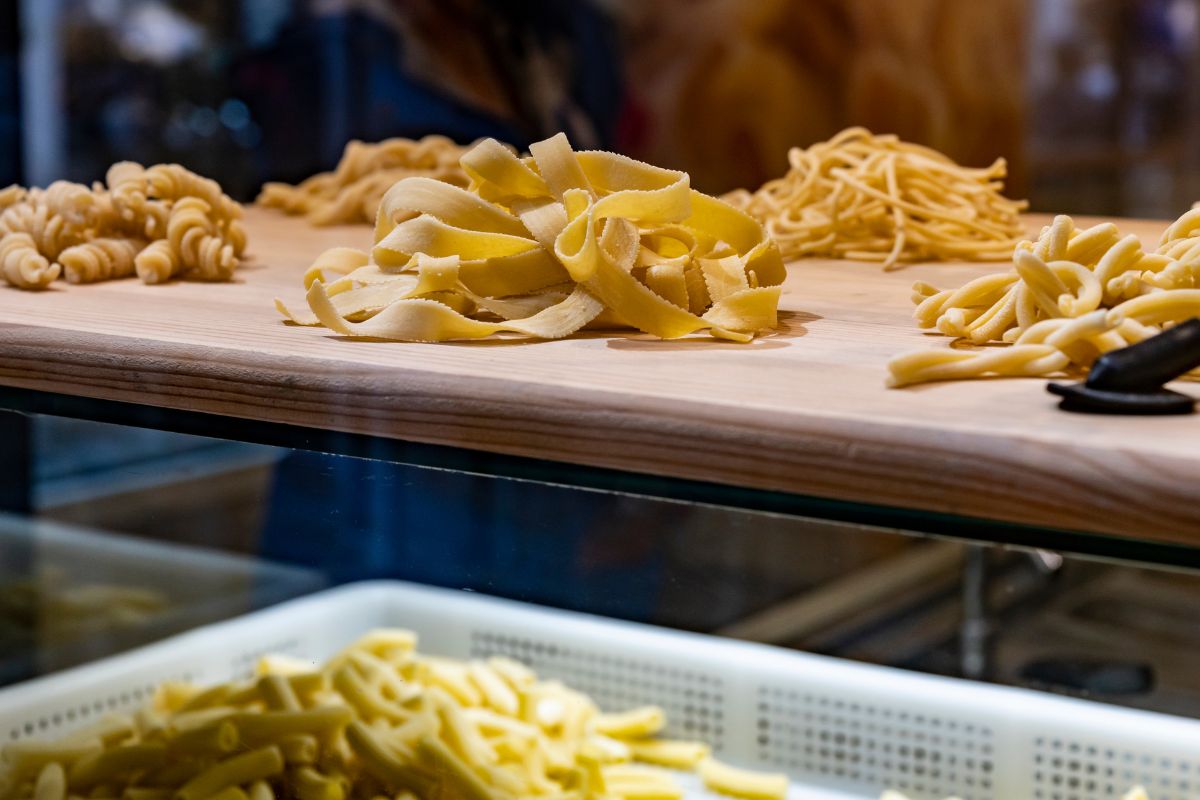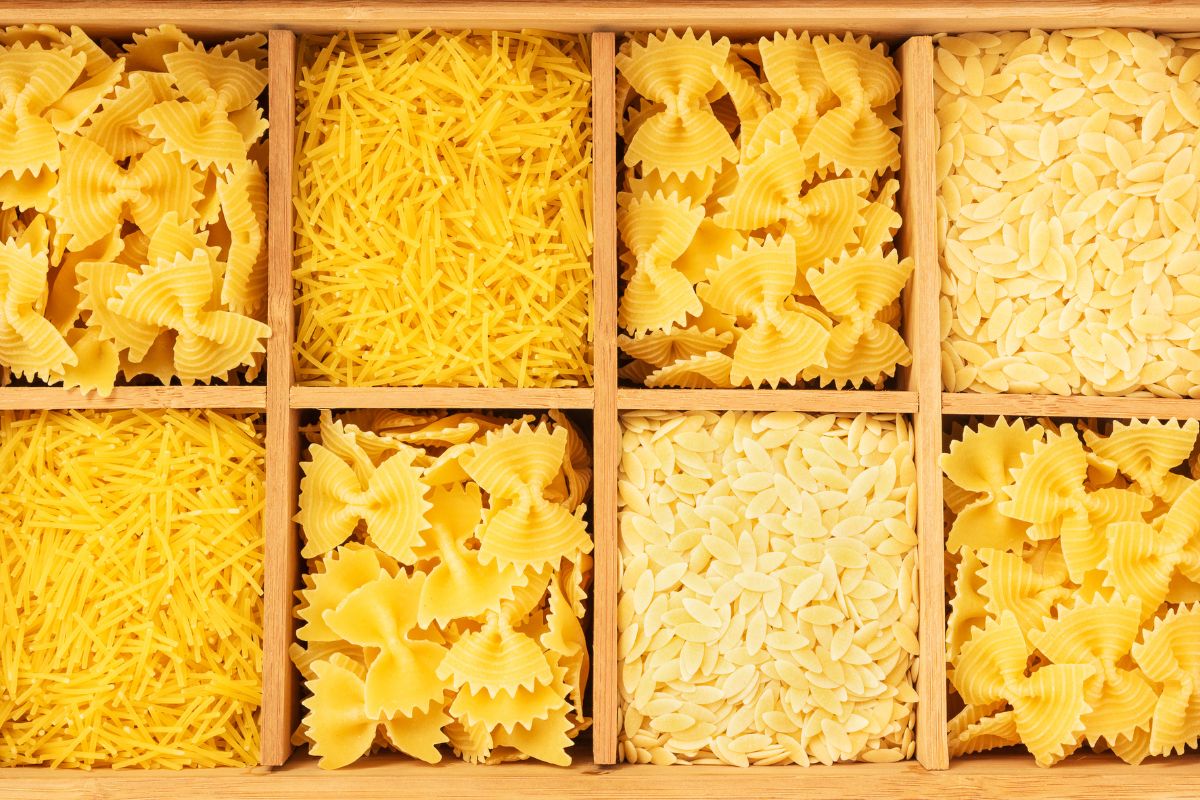Learn how to store pasta long-term with expert tips; keep it fresh and ready for meals. Explore our guide today!
Storing Pasta
Storing pasta correctly is essential for maintaining quality. Understanding long-term pasta storage options is vital for retaining flavor and texture, whether in the pantry or freezer. Different methods suit various types of pasta, allowing for a flexible approach to preservation.

Does Dry Pasta Go Bad?
It’s a common question among those interested in long-term pasta storage. Dry pasta’s shelf life can vary depending on several factors, such as the type of pasta, packaging, and storage conditions.
While it may not spoil quickly, improper storage can lead to a loss in quality, including changes in flavor and texture. Thus, understanding proper storage methods is critical to maintaining your pasta’s quality over time.
How Long Does Dry Pasta Last?
The answer depends on various factors such as the packaging, storage environment, and even the pasta’s ingredients. Typically, dry pasta has a shelf life of about one to two years. However, proper attention to pasta expiration dates and storage recommendations can extend this timeframe.
Kept in a cool, dry place sealed in an airtight container, dry pasta can retain its quality well beyond its printed expiration date.
Does Fresh Pasta Go Off?
Unlike dry pasta, fresh pasta contains more moisture, making it more susceptible to spoilage. Knowing how to store pasta long-term can help in preserving its quality. Fresh pasta typically lasts two-five days in the refrigerator, but it can be frozen longer.
The storage method and ingredients used in fresh pasta significantly influence its shelf life. Proper packaging and temperature control are key factors in maintaining freshness.
The Shelf-Life of Pasta
The shelf life of pasta varies widely based on its type and how it’s stored:
Angel Hair
Dry angel hair can last up to two years unopened. Fresh varieties have a shorter shelf life of a few days.
Bow Tie Pasta
Dry bow tie pasta typically has the same two-year shelf life. Fresh versions need refrigeration and last for two-five days.
Egg Noodles
Lasting up to a year, dry egg noodles have a shorter shelf life than other types. Fresh egg noodles need to be consumed within three days.
Fettuccine
Like other dry pasta, dry fettuccine can last up to two years. Fresh fettuccine needs to be consumed within a week.
Spaghetti
Dry spaghetti lasts around two years, while fresh spaghetti lasts three to five days.
Understanding the different types of pasta and their respective storage requirements will enable you to maximize the shelf life of pasta, whether you choose to store it in a pantry or refrigerator.
How to Store Pasta Long-Term
When it comes to long-term pasta storage, both fresh and dried pasta have specific needs to maintain optimal quality:
- Fresh Pasta: Fresh pasta requires refrigeration and can last for two-five consecutive days. For long-term storage, freezing is your best option. Place the fresh pasta in an airtight container or vacuum-sealed bag, which can be frozen for up to eight months.
- Dried Pasta: Dried pasta offers more flexibility in long-term storage. It can last up to two years when stored in a dry, cool place away from direct sunlight. Airtight containers will protect the pasta from moisture and potential pests, ensuring its quality.
Understanding these methods and tailoring them to the specific type of pasta you have will allow you to enjoy your favorite dishes long after the initial preparation. Whether fresh or dried, proper long-term pasta storage techniques ensure the pasta remains tasty and fresh.

How to Store Cooked Pasta for Later
Storing cooked pasta for later consumption requires careful consideration to avoid pasta expiration and maintain quality:
Cooling
Allow the cooked pasta to cool to room temperature. This helps prevent the proliferation of bacteria leading to spoilage.
Adding Oil
Tossing the pasta with a bit of olive oil can prevent sticking and help retain moisture.
Refrigeration
Place the pasta in an airtight container and refrigerate. Generally, cooked pasta can be refrigerated for three-five days.
Freezing
For longer storage, cooked pasta can be portioned and frozen in airtight containers or freezer bags. It can last up to one-two months in the freezer.
Reheating
The pasta can be reheated in the microwave or stove when eaten. Frozen pasta can be directly cooked in boiling water or thawed in the refrigerator.
Proper storage techniques are essential to prevent pasta expiration and ensure that the cooked pasta retains its texture and flavor. Following these guidelines allows you to enjoy your cooked pasta later without compromising quality.
Does Box Pasta Go Bad?
This is a common query for those looking to understand what is the shelf life of pasta in its boxed form. The answer lies in the type of pasta and the storage conditions:
- Dry Box Pasta: Dry pasta that comes in a box has a shelf life of one to two years when unopened. It can last beyond this if stored in a cool, dry place, but the quality might degrade.
- Fresh Box Pasta: If it’s fresh pasta contained in a box with a modified atmosphere packaging, the shelf life is shorter, usually ranging from a few days to a couple of weeks, depending on the ingredients and storage conditions.
How to Store Egg Noodles Long-Term
Storing egg noodles requires particular attention, as they differ slightly from other pasta types. Here’s a guide on how to store pasta long-term, specifically focusing on egg noodles:
Dry Egg Noodles
These have a shelf life of around six-12 months when stored in a cool, dry place. Using an airtight container can help preserve their quality.
Fresh Egg Noodles
Fresh egg noodles can be refrigerated for up to three days. For long-term storage, freezing is recommended. Lay them on a baking sheet (flat) to freeze them one by one, then transfer them to a freezer bag. They can be kept frozen for up to eight months.
Cooked Egg Noodles
Storing them properly is essential if you’ve cooked more egg noodles than needed. They can be refrigerated in an airtight container for up to five days or frozen for up to two months.
How to Know if Pasta Has Gone Off
Recognizing the signs that the shelf life of pasta has expired can help in making informed decisions about consumption:
- Appearance: Dry pasta that has gone off might show discolorations or spots. Fresh pasta could become slimy or develop mold.
- Smell: An off or sour smell indicates that pasta has spoiled, especially fresh or cooked pasta. Dry pasta usually has no smell, so any unusual odor should be a warning.
- Texture: If cooked pasta feels excessively slimy or mushy, it might be spoiled. Fresh pasta that feels too sticky might also indicate spoilage.
- Taste: While not recommended as a primary method of checking, any off-taste can signal that the pasta is no longer suitable to eat.
- Packaging: Damaged or compromised packaging can affect the shelf life of pasta. Any signs of insects or moisture should be a clear indicator to discard the product.
- Expiration Date: Always refer to the packaging for the expiration date. While dry pasta might be fine slightly beyond this date, it’s best to adhere to it, especially for fresh or filled pasta.
Knowing the pasta’s shelf life and identifying the signs of spoilage ensures that you consume only fresh and safe products. Regular inspections and proper storage practices
Supplies Required for Pasta Stockpiling
For those looking to engage in long-term pasta storage, having the right supplies and understanding the process is crucial. Here’s a list of essential tools and containers to ensure optimal quality:
Airtight Containers
Ideal for dry pasta, these prevent moisture and pests from compromising the quality.
Vacuum Sealer
A vacuum sealer can prolong shelf life by removing air from the packaging, which is especially useful for fresh pasta.
Freezer Bags
If freezing is part of your long-term storage plan, quality freezer bags are essential for fresh and cooked pasta.
Cool, Dark Pantry, or Cupboard
For dry pasta, a designated storage area that is cool and away from sunlight helps maintain the integrity of the product.
Labels and Markers
Labeling with dates and contents ensures that you can quickly identify and manage the rotation of your pasta stockpile.
Refrigerator and Freezer
Appropriate appliances with temperature controls are necessary for storing fresh or cooked pasta. Having dedicated spaces can be helpful.
Microwave-Safe Containers
For storing leftovers that will be reheated, having microwave-safe containers adds convenience.
Shelving Units
If you’re stockpiling large quantities, dedicated shelving that allows easy access and visibility can be beneficial.
Regular Inspection Tools
A good flashlight for inspecting packages and a thermometer to monitor storage temperatures can be valuable additions.
Why Does Pasta Go Off?
The process of pasta expiration can be attributed to several factors:
- Moisture Exposure: Both fresh and dry pasta are susceptible to spoilage if exposed to moisture. Moisture can lead to mold growth in dry pasta, while fresh pasta may become slimy.
- Bacterial Growth: Fresh or cooked pasta, particularly those containing eggs or fillings, can become breeding grounds for bacteria if not stored correctly, leading to spoilage.
- Temperature Fluctuations: Storing pasta at incorrect temperatures, especially fresh or cooked varieties, can accelerate the process of pasta expiration.
- Insect Infestation: Insects can compromise dry pasta if not stored in airtight containers.
- Chemical Changes: Over time, the fats in some pasta can become rancid, leading to off flavors and spoilage.
- Packaging Damage: Any damage or compromise to the packaging, such as tears or holes, can affect the product’s shelf life.
- Past Expiration Date: Consuming pasta past its expiration date, especially fresh pasta, can lead to spoilage, as the product might no longer be at its peak quality.
- Improper Handling: Cross-contamination or exposure to odors and flavors from other food products can affect pasta quality.

That’s a Wrap
Understanding how to store pasta long-term is vital for anyone looking to preserve this staple food’s quality and enjoy it at its best. The process requires care and attention, from properly using airtight containers to the awareness of factors that can lead to pasta expiration.
Recognizing the shelf life of pasta for various types—fresh, dry, or cooked—is an integral part of this knowledge. Investing in the right tools and adhering to proven storage practices ensures that your pasta remains delectable and safe to eat, whether stockpiling for future use or saving leftovers for another meal.
Long-term pasta storage doesn’t have to be a complex task; with the proper guidance and commitment, you can make the most of this versatile and beloved ingredient in kitchens worldwide.

Community of passionate writers and content creators who share a love for Italian heritage, culture, travel, food, and the Italian-American community. Our mission is to celebrate Italy’s rich history and traditions and connect with others who share the same passion.

